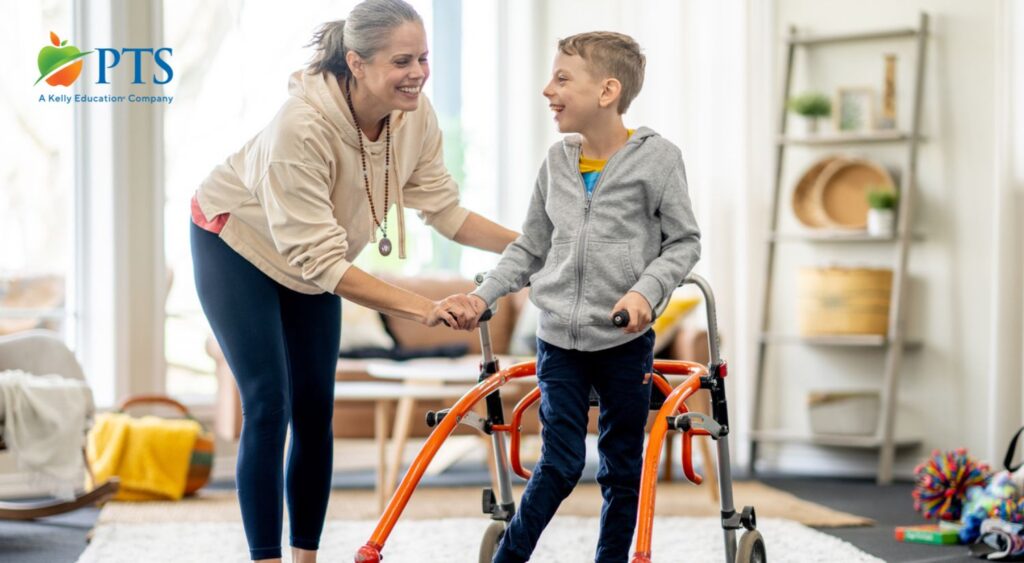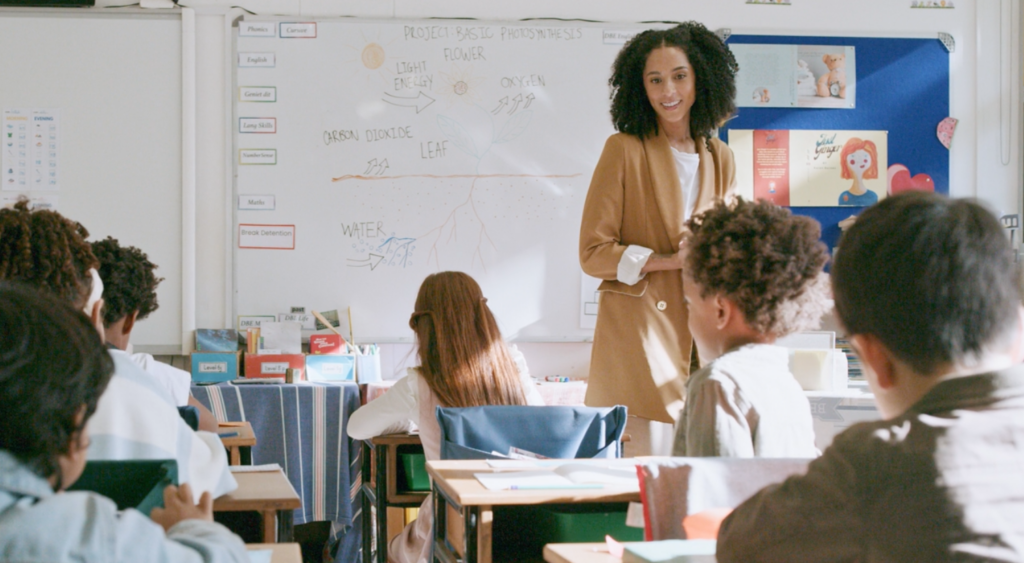School-based pediatric physical therapist job description.

A school-based pediatric physical therapist job description includes the duties and responsibilities for someone looking to work with students to overcome physical challenges they face in reaching their full potential in an academic setting.
The job description paints a picture of what a day in the life of a pediatric physical therapist entails.
What does a typical day look like for a pediatric physical therapist in schools?
As a pediatric physical therapist, your day will focus on helping students with disabilities or developmental delays overcome barriers and access their learning environment. The goal is to help them move to and from and participate in all school activities as safely and independently as possible. To do so, you’ll help them build their balance, coordination, strength, and motor skills. Simply put, you help them move better so that they can learn better.
Depending on the school district in which you work, you may be based at one school for your tenure. Or you may float from school to school within the district. Regardless, you’ll be working as part of the student’s support team, which includes other teachers, clinicians, and parents, to create a plan tailored to every student’s ability, needs, and individualized education program (IEP) goals.
Here’s a quick snapshot of what a typical day as a pediatric physical therapist at a school could include:
- Conducting student evaluations to assess functional abilities, posture, and mobility
- Setting therapy goals based on IEP team collaboration
- Implementing individualized therapy plans tailored to each student
- Tracking student progress and updating plan goals if needed
- Collaborating with aides and teachers to ensure students are supported throughout the school day
- Advocating for students to receive adaptive equipment or classroom modifications to enable them to learn better
Pediatric physical therapist in schools: Key responsibilities.
As noted above, every school district differs, so exact responsibilities will vary slightly. However, you can expect to be responsible for certain core pediatric physical therapist tasks.
Conduct assessments and prepare progress reports.
To effectively develop plans to help students, you’ll need to conduct a thorough assessment of their physical skills and abilities. More specifically, you’ll need to assess how their classroom performance and participation in daily school activities are impacted, and how you can help improve that. You’ll then document this information in a written evaluation to help create a tailored therapy plan and support the IEP documentation.
Work directly and indirectly with students.
A core tenet of your responsibilities is to provide physical therapy services to students, both directly and indirectly.
- Direct support: This involves working directly with students, whether in a 1:1 session with the student or in group sessions.
- Indirect support: This involves working to support your students through consultations with teachers about how to help students, recommending adaptations that enable students to participate in learning in a larger capacity, and evaluating the school environment (e.g., hallways, cafeterias, playgrounds) to ensure it is safely accessible for all students.
Collaborate with a student’s learning teams.
As a pediatric physical therapist, you’ll be part of a student’s support and IEP team. Consequently, you’ll need to attend meetings to discuss progress, collaborate on setting annual goals for the student, and advocate for accommodations that provide inclusivity and student success.
You’ll also need to build a strong relationship with every student’s family. This will help you understand the support level a student gets at home, and you’ll be a critical component of helping parents understand how your services support their child’s educational success.
Am I qualified to become a school-based pediatric physical therapist?
Having the right foundation is essential to being a successful school-based pediatric physical therapist. Some basic qualifications include:
- Education: You’ll need to earn your Doctor of Physical Therapy degree from a CAPTE accredited program.
- Licensing: To work as a pediatric physical therapist, you’ll need to pass the National Physical Therapy Examination (NPTE) and obtain any state-mandated license.
- Experience: While it’s not always required, having experience working with children or in school settings can set you up for success in this type of role. At PTS, we have resources to help our providers become proficient in pediatric assessment tools, intervention techniques, and working with IEPs.
- Professionalism: You’ll need to be comfortable managing caseloads and meeting documentation deadlines, as well as be skilled in communicating and collaborating on plans that support student success.
Pediatric Therapeutic Services: We’re here to help you make a difference.
More and more school districts are seeing the benefit of using a company to hire their school-based therapists. If this pediatric physical therapist job description aligns with your career goals, consider joining our team at Pediatric Therapeutic Services. At Pediatric Therapeutic Services, we work with occupational therapists, speech-language pathologists, physical therapists, psychologists, mental health professionals, and other clinicians to help you find the right school-based placements.
If you’re interested in becoming a school-based pediatric physical therapist, learn more about joining our team.
View Related: Applying for jobs Article Job searching
You might like
Education Hiring Event – Aurora Public Schools
< 1 minute read
Nov. 11 | Aurora, Colorado
Education Hiring Event – Ascension Parish School District
< 1 minute read
Nov. 5 | Ascension Parish, LA
Education Hiring Event – Louisiana School Districts
2 minute read
Nov. 5-7 | Louisiana School Districts
Education Hiring Event – Aurora Public Schools
< 1 minute read
Nov. 11 | Aurora, Colorado
Education Hiring Event – Ascension Parish School District
< 1 minute read
Nov. 5 | Ascension Parish, LA
Education Hiring Event – Louisiana School Districts
2 minute read
Nov. 5-7 | Louisiana School Districts
Find your next job
Discover thousands of temporary, full-time, and remote jobs for beginning and experienced job seekers.



